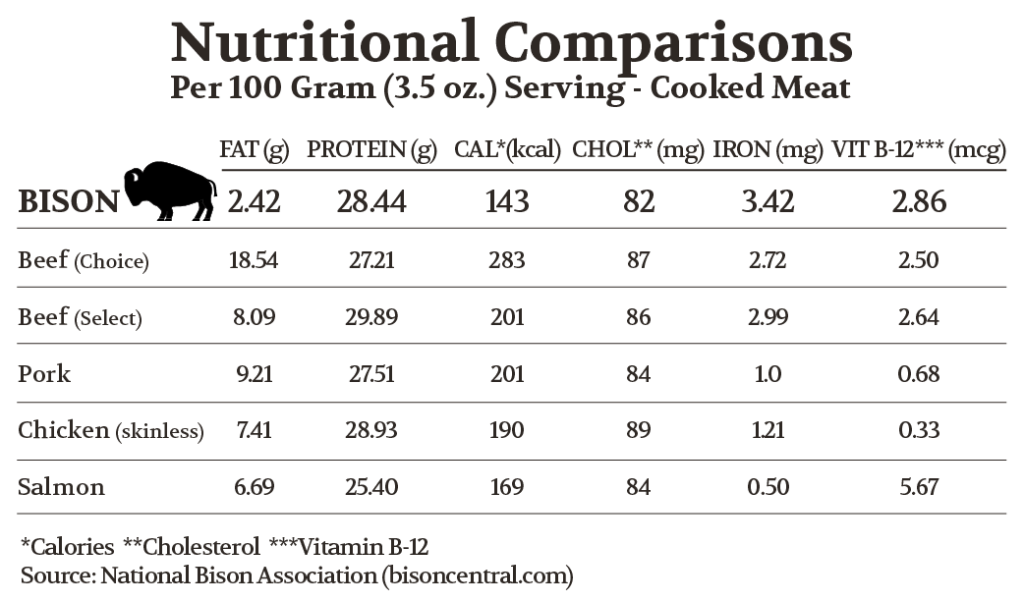Health Facts
If you are new to the idea of consuming buffalo meat, you may be wondering what benefits or risks are involved, both to yourself and to the environment. Buffalo is a wonderful alternative to not just beef, but to all other frequently consumed proteins. There are many factors to consider, and you will likely be pleasantly surprised by the many benefits buffalo meat has to offer.
Benefits to the Consumer
- Buffalo are hardy and are largely resistant to disease, which means they need minimal human intervention to maintain health. This means they require antibiotics only to treat specific illness. They are not given questionable drugs or chemicals, nor any growth hormones.
- According to research done by Dr. M. Marchello at North Dakota State University, bison meat is highly nutrient dense. Its proportion of protein, fat, mineral, and fatty acids to its caloric value make it a kind of power meat. In addition, it has a greater concentration of iron than many other meat sources. This table provides a revealing comparison among some of the most common sources of protein and demonstrates some of the huge health benefits bison meat has to offer.

Benefits to the Environment
- Because buffalo are native to North America, they do not need artificial shelter and, in fact, prefer to be outside year-round, regardless of weather conditions. This means less alteration to the landscape and lower costs to raise herds.
- Another benefit of buffalo being native to North America is the symbiotic role they play in their ecosystem. Buffalo graze on many native grasses, helping to speed the process of decomposition which would otherwise be overloaded by the bulk of grasses which grow naturally. Without the natural intervention of grazers and fire, the overgrowth would choke the healthy growth of more grass. Buffalo remove the excess plant cover and convert it into protein. In addition, as they graze, their manure and urine play a vital role in resupplying nutrients to the ground. Large herds’ hooves help to aerate the soil and to bury seeds, helping the plant cycle continue.
